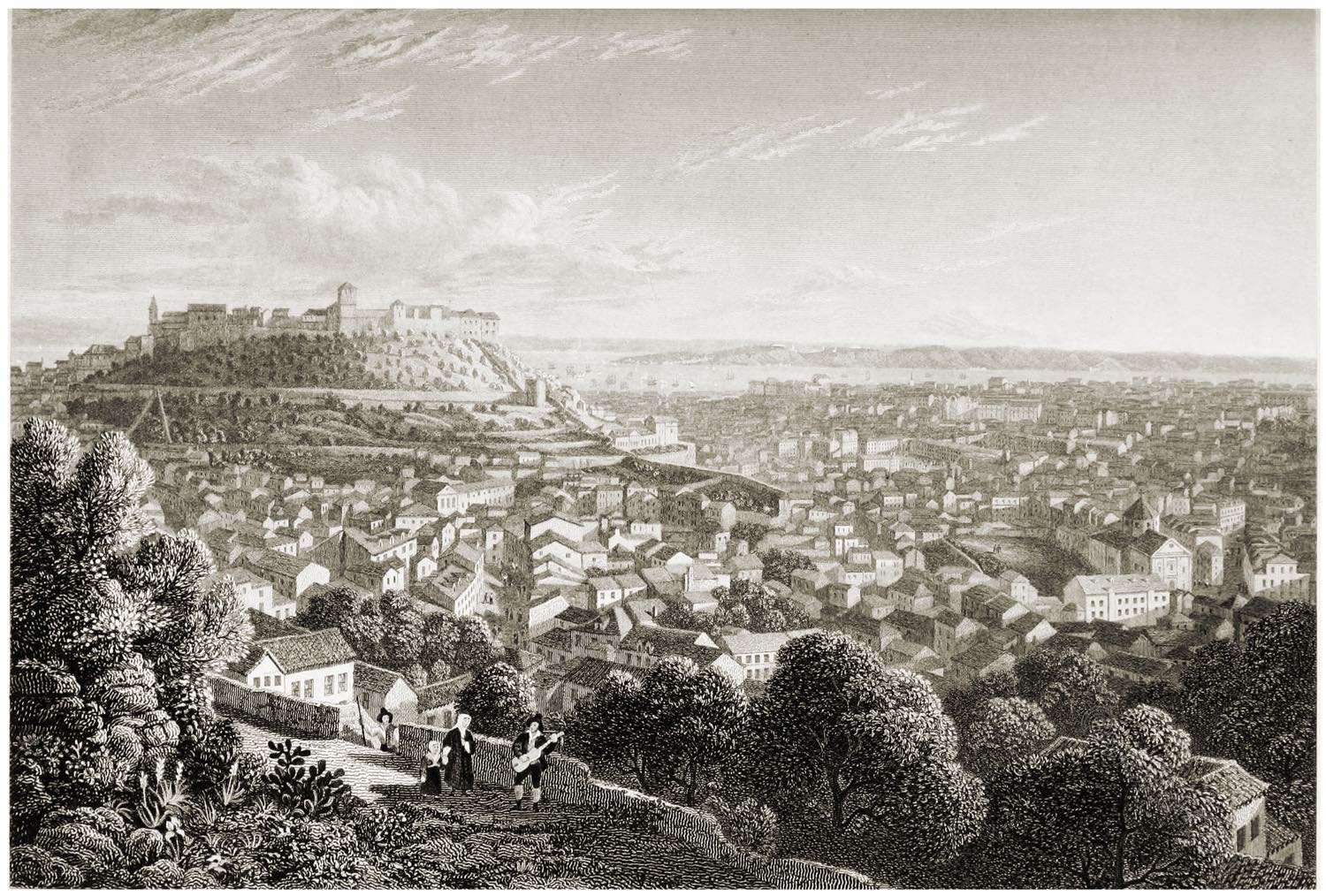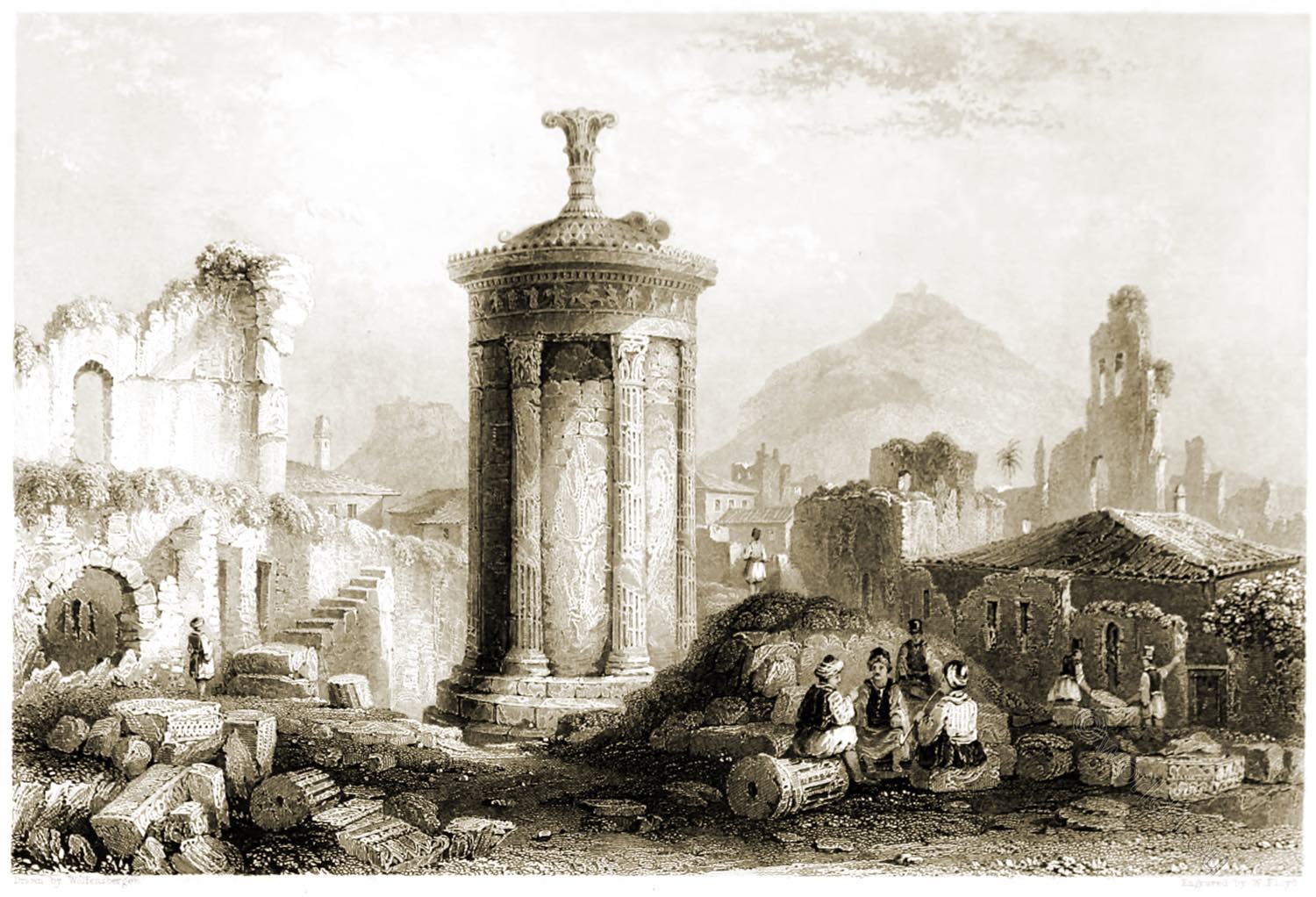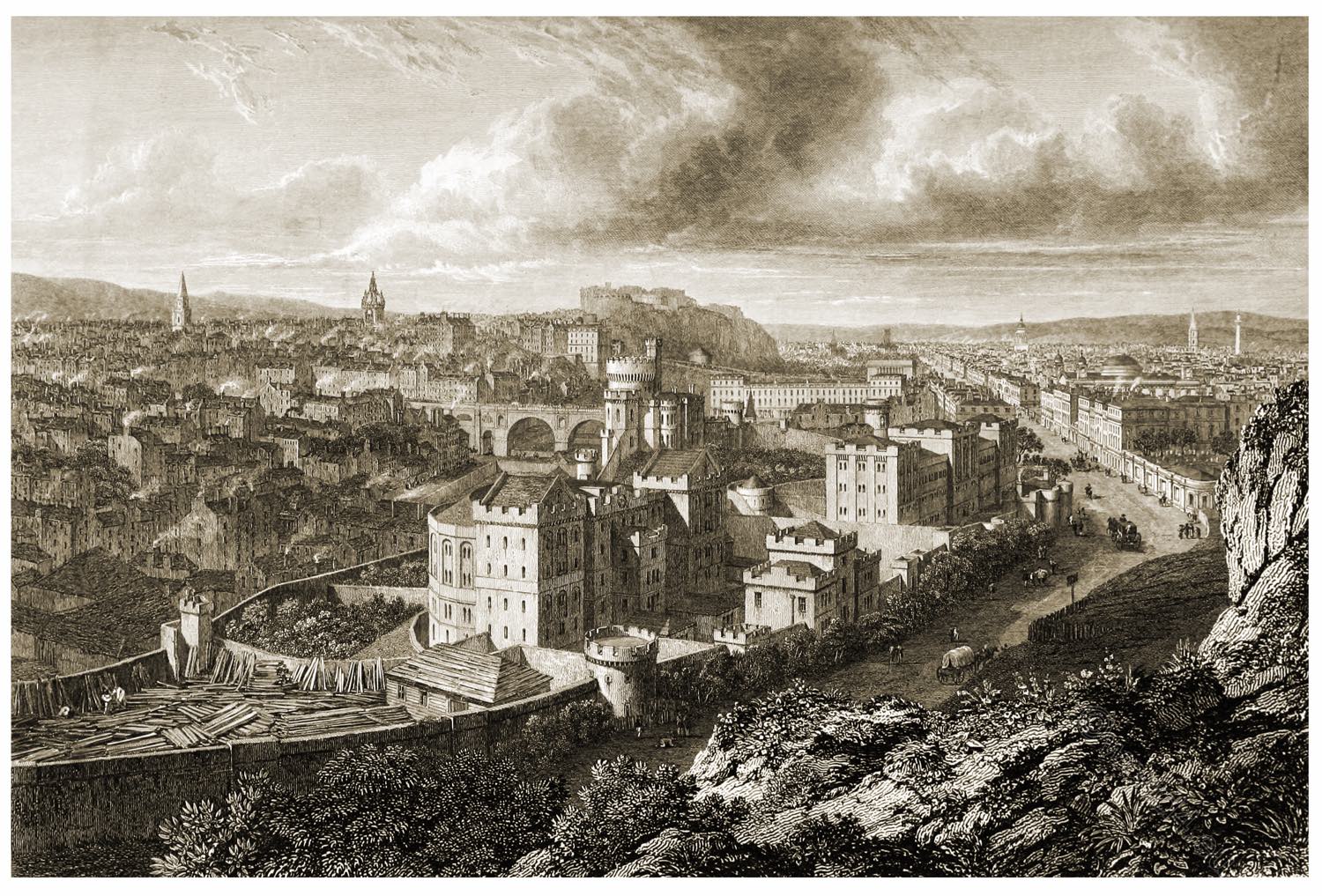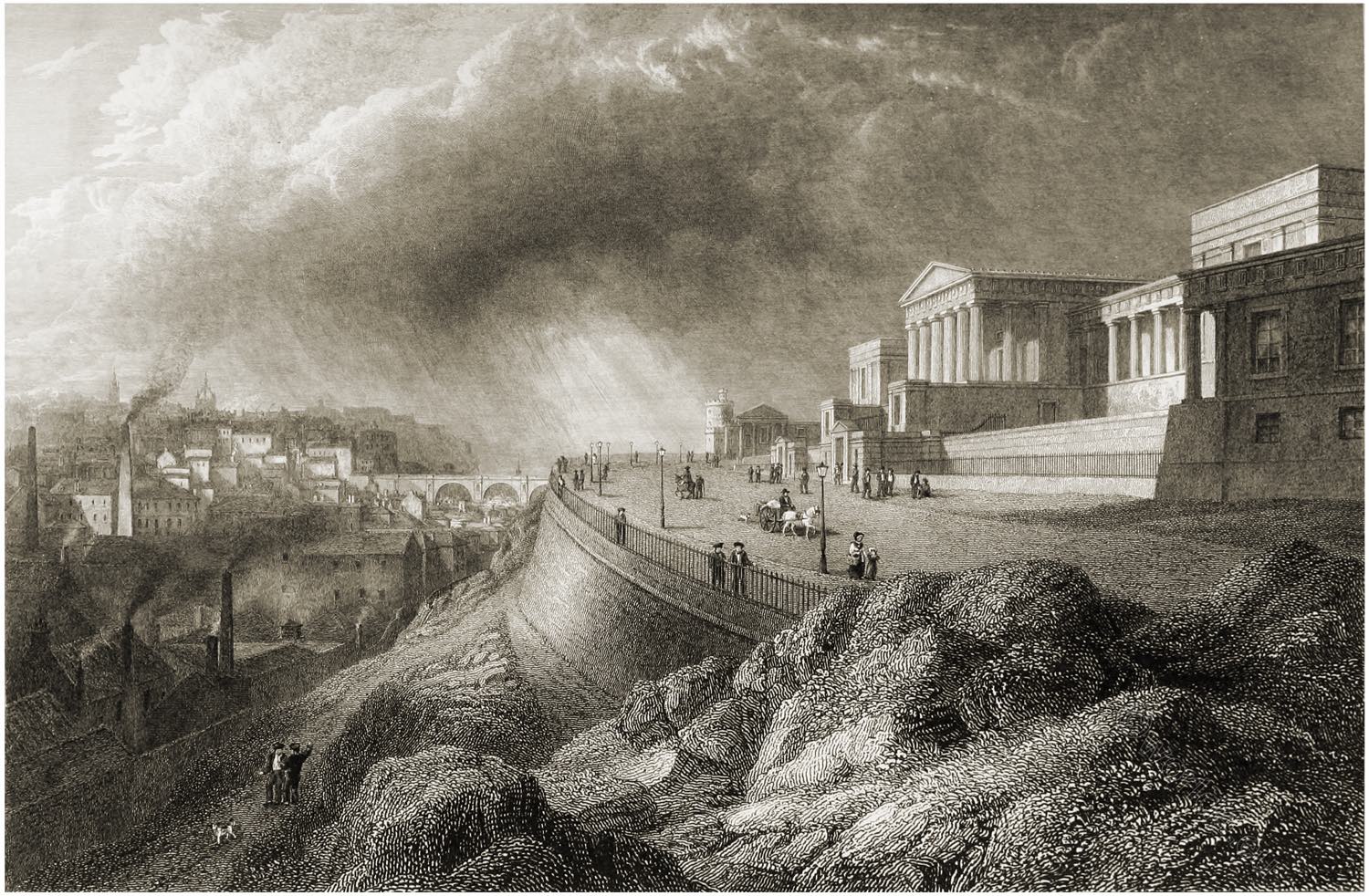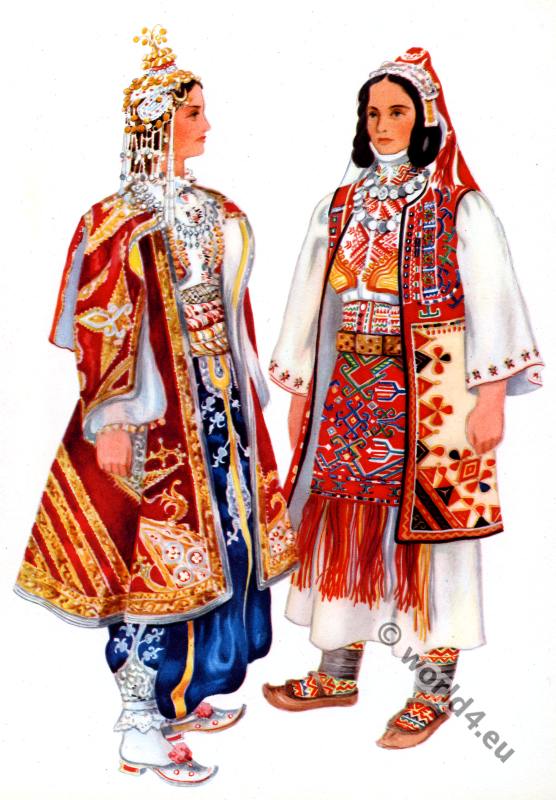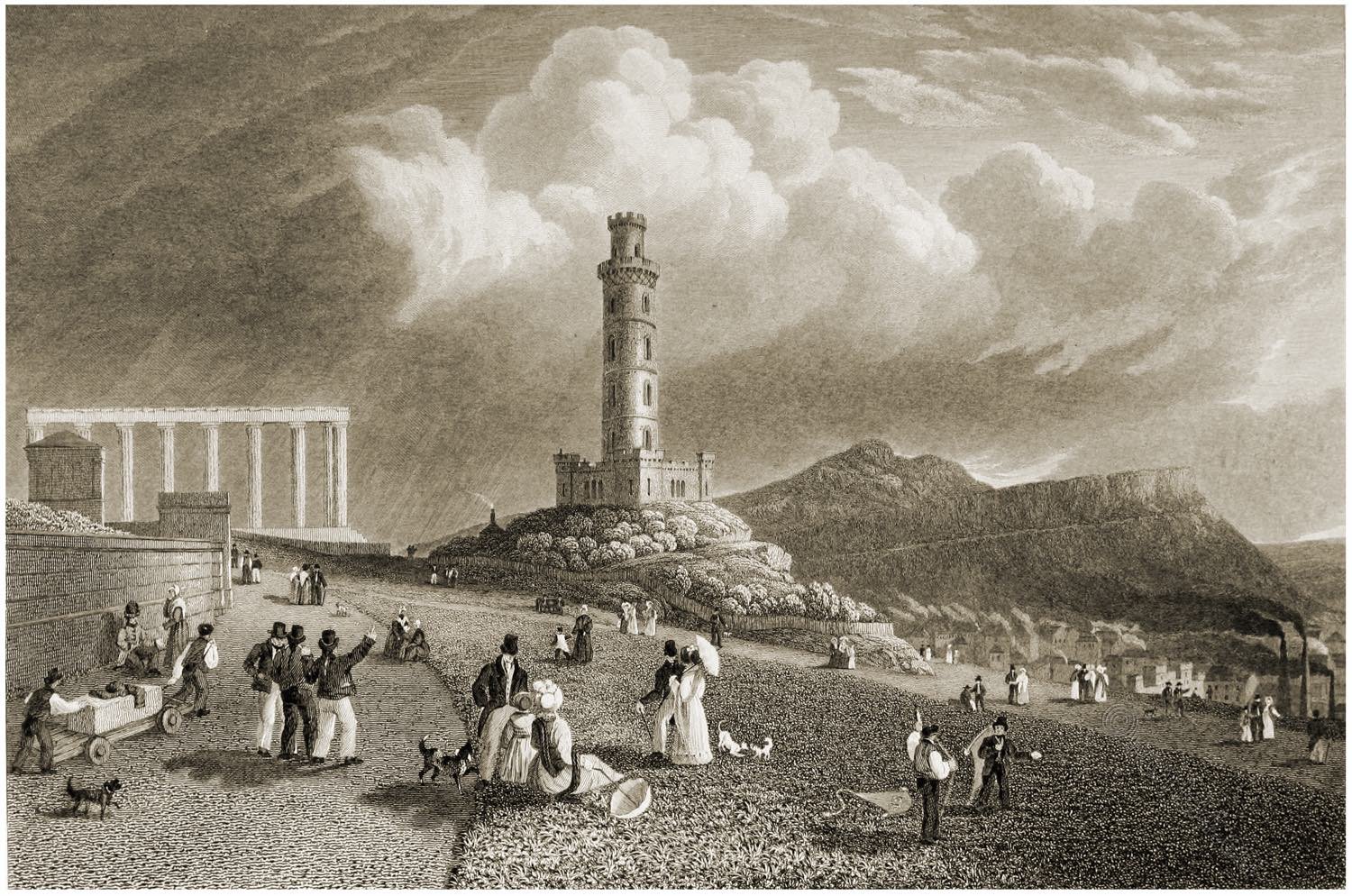
EDINBURGH. THE CALTON HILL, NELSON’S MONUMENT, THE NATIONAL MONUMENT, &c.
The situation of the Calton Hill has been indicated in the description of the preceding plate. The Monument erected in honor of Lord Nelson stands conspicuously on its summit, forming a picturesque and ornamental termination to the long vista down Princes Street.
The view of the city from the top of this monumental column is truly wonderful, commanding a prospect of the Firth of Forth flowing into the German Ocean, and of countless objects which present themselves on every side.
The spirit and patriotism of the inhabitants of Edinburgh will probably in time crown the whole of the Calton Hill with beautiful and magnificent buildings, and render this fine northern capital worthy of its boasted title of “The Modern Athens.”
In the view before us, Nelson’s Monument towers in the centre of a group of interesting objects. On the left are the columns of the intended great National Monument, enough of which has already been erected to give fair promise of its future grandeur. In front of these columns is the Monument of the late Professor Playfair, and nearer to the spectator is the entrance to the new Observatory.
The distance on the right-hand is bounded by the rugged front of Arthur’s Seat and Salisbury Crags frowning on the lower portion of the Old City in the valley below.
Source: Select views of some of the principal cities of Europe by Robert Batty. London: Moon, Boys, and Graves, 1832.
Continuing
EDINBURGH.
The Castle, from the Grass Market.
Edinburgh, from the Calton Hill.
The Calton Hill, Nelson’s Monument.
Edinburgh, from St. Anthony’s Chapel.
Edinburgh, from the ascent to Arthur’s Seat.


